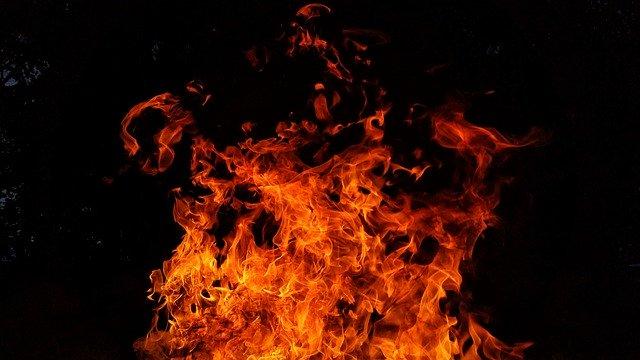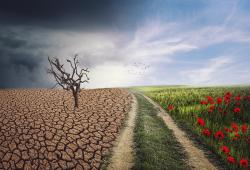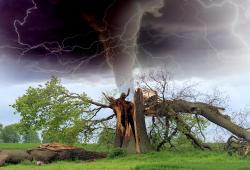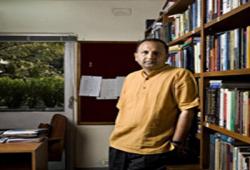
The Australian inferno is a signpost to the future ecology of the earth. Almost three quarters of the country’s land-mass is classified as ‘arid’, ‘semi-arid’ or ‘desert’. After the ongoing climate fires, this proportion may become dangerously bigger, given that an area larger than Uttarakhand, along the country’s relatively habitable, densely populated south-east coast, has already burned down in the ongoing fires. Anthropogenic desertification is under way Down Under.
Does it matter whether Australia mutates diametrically from a land of immigrants to one of emigrants, of climate refugees? That it becomes (for different reasons) an uninhabitable continent, like many small Pacific islands whose fate is a foregone conclusion? This is no longer a theoretical speculation. Over half of the country’s population of 26 million has been physically affected by the fires. “It is conceivable that much of Australia simply becomes too hot and dry for human habitation,” concludes U.S. climatologist Michael Mann.
A conservative estimate by University of Sydney terrestrial ecologist Chris Dickman places the number of animals, birds, and reptiles killed in the long blaze at a staggering one billion. It is an unprecedented wildlife holocaust. The scale of devastation is nothing short of epic. This is a man-made catastrophe. Nobody seriously doubts that Australia’s rapidly rising temperatures are rooted in its energy policies.
The 2010s, marked by unprecedented drought, were the hottest decade ever recorded in Australian history. While what are euphemistically described as ‘bushfires’ are nothing new in Australia, it is also true that significantly higher temperatures and hotter air dries out forests and the rest of the landscape and makes them much more inflammable. An eyewitness who has lost much to the fires describes them as “a raging ocean”.
Entire ecosystems and communities have been wiped out. At least 33 people have been killed. Thousands have lost their homes and farms. A conservative estimate by University of Sydney terrestrial ecologist Chris Dickman places the number of animals, birds, and reptiles killed in the long blaze at a staggering one billion. It is an unprecedented wildlife holocaust. The scale of devastation is nothing short of epic.
This is a man-made catastrophe. Nobody seriously doubts that Australia’s rapidly rising temperatures are rooted in its energy policies. Funded as its political parties are by the fossil fuel lobbies, Australia is one of the world’s most active promoters of coal, oil and gas. It gets a Prime Minister heavily invested in climate change denial, thanks to this deep-rooted corruption in its polity. Australia is the second largest emitter of carbon per capita, after Saudi Arabia. It is the world’s fourth largest producer of coal after China, India, and the US. It is the world’s largest coal exporter. It is also the largest liquefied natural gas exporter. Overall, this makes Australia the world’s third largest exporter of fossil carbon, after Saudi Arabia and Russia. It means that if Australia achieves its planned fossil fuel expansion, the world cannot meet the climate goals of the 2015 Paris agreement. Yet, the Australian government’s diplomatic diligence ensures that its energy policy is rarely discussed in international fora.
As if the climate fires are happening on another continent, 53 new coal mines have been proposed by the government. The IMF reports that in 2015 the Australian government used tax-payers’ money to subsidise the coal industry to the tune of US $ 29 billion. This means that every Australian has been contributing over a thousand dollars every year ultimately towards her own destruction.
The transition to a more sustainable energy policy and a relatively decarbonised economy can be made in Australia. However, fossil interests fuel the country’s politics to a degree perhaps unmatched in today’s world. Unless this reality is confronted there is little hope of a transition towards a renewable future.
The transition to a more sustainable energy policy and a relatively decarbonised economy can be made in Australia. However, fossil interests fuel the country’s politics to a degree perhaps unmatched in today’s world. Unless this reality is confronted there is little hope of a transition towards a renewable future. The lethal fires of this summer may become typical of the country’s landscape in the coming seasons, sure to render the continent less habitable.
Lessons for India
There are several lessons India must draw from the Australian catastrophe. For starters, it must restrain its own fossil barons - both within our shores, and beyond. “Stop Adani” has been the word on Sydney’s Bondi Beach for a while now. The Adanis’ mammoth coal venture in Queensland has been opposed for several years across Australia. This will become Australia’s largest ever coal mine, and one of the largest in the world.
The project will contribute significantly to global carbon emissions (both within Australia and in countries like India to which the coal will be exported). It will destroy the ecology of the Great Barrier Coral Reef, off the Queensland coast. It has therefore been strongly resisted by environmentalists as well as by the local indigenous population of Queensland, who stand to lose, along with water for farming and grazing, their culture and traditions as the entire region’s ecology is transformed in the wake of the gigantic coal project. There has also been a big question mark on the project’s financial viability, with at least a dozen international banks by 2015 refusing to fund the project. Since then many more have followed suit." ![]()
As the Adani coal story unfolds in Queensland it becomes clear that in the global age, we are past the era of colonisation by nations. The world is now quite evidently a case of metropolitan colonisation: anyone with enough capital on command is in a position to inflict great socio-ecological damage. Indian political, business, and policy leaders have much to answer for in this regard.
In June 2019, the government of Queensland gave the final green light to the company’s controversial Carmichael coal mine, 400 km inland from the Pacific coast. The Galilee Basin, one of the world’s largest untapped reserves of thermal coal, has now been opened up. According to knowledgeable Australian hydrologists, the science on which the government’s approval rests is “questionable”: “Adani’s excavations will mark the start of a highly uncertain experiment into the effects of mega-scale disturbance to a natural groundwater flow system and the ecosystems that depend on it. Time will tell whether the benefits of the mine warrant the impacts it will cause.”
The Adani business group has become India’s face Down Under, no less than a symbol of Australia’s future. As the Adani coal story unfolds in Queensland it becomes clear that in the global age, we are past the era of colonisation by nations. The world is now quite evidently a case of metropolitan colonisation: anyone with enough capital on command is in a position to inflict great socio-ecological damage. Given the enormous corruptibility of governments and political parties, this stands squarely in the way of the global cooperation so urgently needed to face the looming apocalypse of climate change. Indian political, business, and policy leaders have much to answer for in this regard.
There are other things India needs to pay attention to. Our climate and ecosystems are similar to Australia. The likelihood of forest fires in a drying, heating climate is only going to grow. The fires in recent years in Uttarakhand and in Karnataka are early warning signs to be heeded. Latest reports suggest that forest fires may also hasten the melting of Himalayan glaciers, such as the one at Gangotri. The Australian blaze is the shape of things to come. One can only hope that the market for climate denial will shrink significantly after this enormous wake-up call for the cloud elites running the world. Failing this, the elements will keep going up in a rage and a hubristic civilisation will meet its inevitable nemesis.
(Dr. Aseem Shrivastava teaches Ecosophy at Ashoka University and is co-author of “Churning the Earth: The Making of Global India”)







